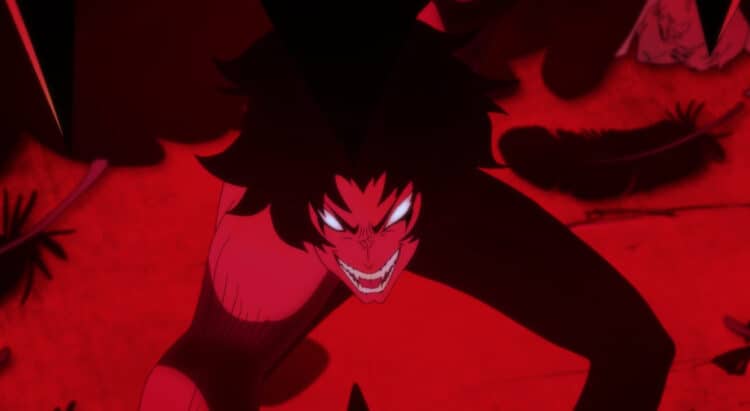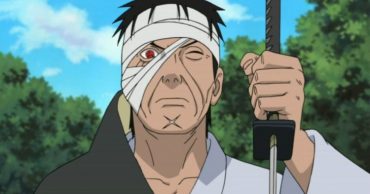
In 2018, Netflix released a 10-episode Anime series called Devilman Crybaby. After years of development, what resulted was probably the best Anime series of the 2010s. It was deliciously weird, polarizing thanks to its brutal and no holds barred depiction of graphic violence, and yet somehow, not as record-breaking as the streaming giant likely thought it would be. Why was this? Devilman Crybaby was very successful and popular to an extent–certainly in its native Japan–but it also represented some of the most brazen and bold storytelling and animation techniques that countries like America likely weren’t prepared for. For a film rating comparison, this was certainly NC-17 material, which is not something that bothered hardcore Anime fans like myself, but was likely jarring to casual viewers. And yes, it did depict many LGBTQ themes, and you can look no further than Reddit to see how that largely played out. But alas, there are some viewers who cannot escape their limited worldview, and it is certain the series became polarizing here because of its interpersonal relationship dynamics. But the series was also dark, a bit bleak, and very strange–also likely some main reasons why it didn’t change the genre. But there are many great things about this series, so let’s take a revisit to the world of Devilman Crybaby.
What Made Devilman Crybaby Great?
The series is adapted from the iconic Manga series by Go Nagai and tells the story of Akira and Ryo, as well as separate storylines exploring Akira’s adopted family, specifically Miki, who he also has a crush on. After Ryo reveals to Akira that demons roam the Earth, and world governments are suppressing the information, Akira is later merged with a demon named Amon, which makes him a “Devilman,” half-demon, and half-human. Like the best horror Anime, Devilman Crybaby manages to tell a convincing horror story while also exploring thematic and intriguing personal stories amongst the characters. There are also some incredible themes present in the series, which sheds a bit of light on just what society was like in the late-2010s. The mass hysteria brought on by differences of opinion, the apathy and bigotry on display for the others in society whipped up by mass panic and hatred instigated by those in charge, as well as how mob mentalities are easily fostered and propagated by the words of a few that can mysteriously translate to the thoughts and actions of others. We start off being afraid of the demons, and even turned off by their propensity for violence and destruction, but we soon see that demonic appetites have nothing on the worst impulses of the human race. And then, there is the beguiling relationship between Akira and Ryo; we are told they are best friends, but there is also something a bit more intense between the two of them. The two never fall into a romantic relationship, but there is a more cerebral romance and shared appreciation between the two protagonists that is fascinating to watch. It is almost as if both friends are in love with the idea of the other, which doesn’t mean they are physically in love with one another.
Boundary Pushing Depiction of Graphic Violence
Devilman Crybaby never shields away from showing brutal violence in full view. I must admit that I am new to this series having finally binge-watched it recently, and the violence did take me off guard. Part of the reason is likely because I never expected Netflix to be bold enough to show something like this, but also because it is not gratuitous, and actually serves the brutality of the demons very convincingly. Consider the fight scene between Devilman and Silene; the fight scene is so well-animated and choreographed, and also dazzlingly weird as only the best Anime can be, that we forget just how brazenly violent the fight scene truly is. Both demons and humans are regularly ripped apart, beheaded, and disemboweled, but none of this is for the sake of being violent, which gives the series’ violence an operatic and wholly necessary edge to it. It likely helps that much of the blood is off-colored to depict a different strain of blood, demon blood perhaps. This likely helped save it from the censors.
LGBTQ Representation
At the center of Devilman Crybaby is the relationship between Akira and Ryo. In the original Manga, the Ryo character is openly gay, and also intersex, which is depicted in the series as well. But rather disappointingly, the passion that Ryo feels towards Akira is more toned down in the series. We get the sense that there is some kind of hidden feelings that Ryo has for Akira, but this is not revealed until the end of the series when Ryo transforms into his true self, Satan. The character of Miko and her unrequited love for Miki is also explored, in addition to a steamy sex scene between two men, but apart from this, the real LGBTQ representation within the series comes from its overall story themes. Since there is Ryo’s love for Akira, and since all of this is set against the backdrop of humans terrorizing Devilmen and Devilwomen, the strongest themes of LGBT representation are found in the stories quest to fight for acceptance in a violent and uncaring world. And even then, tragedy can still occur, just as it does for all of us.
Could There Be a Sequel?
There are currently no plans to create a sequel series to Devilman Crybaby. What was shown was a self-contained story, and the ending certainly brings to a close the relationships between all of these characters. There is no real way to create a sequel, and I doubt a sequel would ever get commissioned–we are lucky we received this series. But that means that this 10-episode series can live on for years as a self-contained work of art. A work of art that is just as powerful in its brash moments as it is in its quiet ones.years of development
 Follow Us
Follow Us





